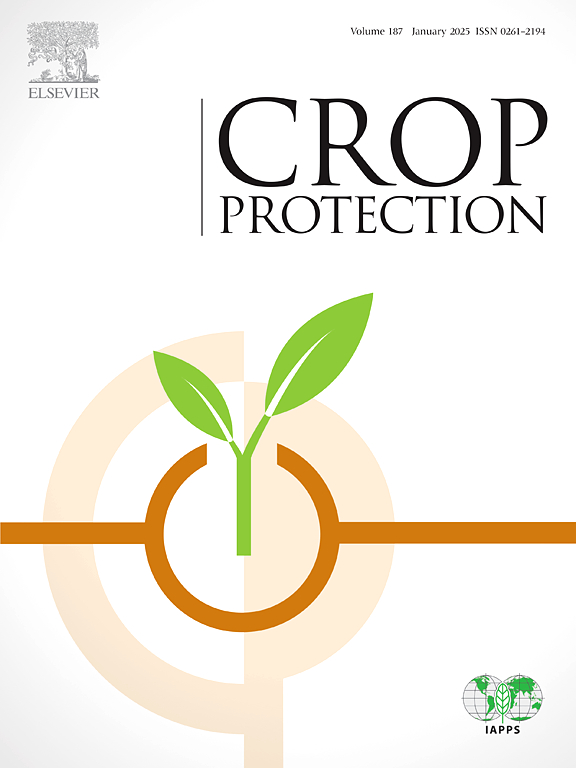Distribution and parasitism rate of cabbage seedpod weevil parasitoids over almost a decade in Quebec (Canada)
IF 2.5
2区 农林科学
Q1 AGRONOMY
引用次数: 0
Abstract
The cabbage seedpod weevil (CSW), a pest of oilseed rape crops, was first detected in the Province of Quebec (Canada) in canola in 2000. The parasitoid wasp Trichomalus perfectus is the main biological control agent of the CSW in Europe. However, its efficiency as well as its distribution across the province of Quebec are poorly known. We investigated CSW damage in canola fields, along with the abundance and parasitism rates of all its parasitoids, as well as that of T. perfectus alone, in Quebec from 2012 to 2020.
This study highlighted that the CSW is well established in Quebec (82% of canola fields sampled), especially in the regions of Bas-Saint-Laurent, Chaudière-Appalaches, and Capitale-Nationale. Only three fields exceeded the threshold of 25% damaged pods, and only in 2019. Parasitoids of CSW were present in 62% of canola fields. Their distribution follows that of the CSW and their populations were primarily composed of Pteromalidae (95.7% of the individuals) among which T. perfectus was the main species with almost 80% of the individuals. The mean parasitism rate from 2012 to 2020 was 43.1% and that of T. perfectus was 26.1%. Seed damage was reduced by 47% on average when CSW larvae were parasitized. Parasitoids, particularly T. perfectus due to its higher abundance compared to other parasitoid species and its significant contribution to the overall parasitism rate, play a key role in controlling CSW populations in Quebec, helping to keep them below the economic damage threshold.
近十年来甘蓝象鼻虫寄生虫在魁北克(加拿大)的分布和寄生率
本文章由计算机程序翻译,如有差异,请以英文原文为准。
求助全文
约1分钟内获得全文
求助全文
来源期刊

Crop Protection
农林科学-农艺学
CiteScore
6.10
自引率
3.60%
发文量
200
审稿时长
29 days
期刊介绍:
The Editors of Crop Protection especially welcome papers describing an interdisciplinary approach showing how different control strategies can be integrated into practical pest management programs, covering high and low input agricultural systems worldwide. Crop Protection particularly emphasizes the practical aspects of control in the field and for protected crops, and includes work which may lead in the near future to more effective control. The journal does not duplicate the many existing excellent biological science journals, which deal mainly with the more fundamental aspects of plant pathology, applied zoology and weed science. Crop Protection covers all practical aspects of pest, disease and weed control, including the following topics:
-Abiotic damage-
Agronomic control methods-
Assessment of pest and disease damage-
Molecular methods for the detection and assessment of pests and diseases-
Biological control-
Biorational pesticides-
Control of animal pests of world crops-
Control of diseases of crop plants caused by microorganisms-
Control of weeds and integrated management-
Economic considerations-
Effects of plant growth regulators-
Environmental benefits of reduced pesticide use-
Environmental effects of pesticides-
Epidemiology of pests and diseases in relation to control-
GM Crops, and genetic engineering applications-
Importance and control of postharvest crop losses-
Integrated control-
Interrelationships and compatibility among different control strategies-
Invasive species as they relate to implications for crop protection-
Pesticide application methods-
Pest management-
Phytobiomes for pest and disease control-
Resistance management-
Sampling and monitoring schemes for diseases, nematodes, pests and weeds.
 求助内容:
求助内容: 应助结果提醒方式:
应助结果提醒方式:


